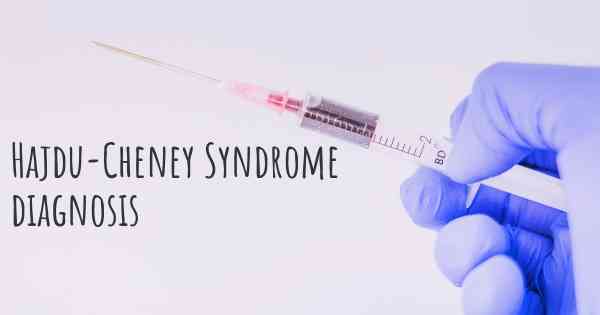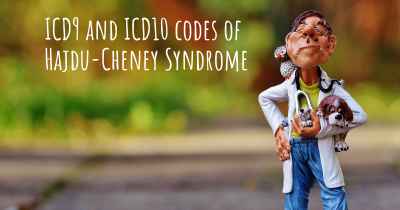How is Hajdu-Cheney Syndrome diagnosed?
See how Hajdu-Cheney Syndrome is diagnosed. Which specialists are essential to meet, what tests are needed and other useful information for the diagnosis of Hajdu-Cheney Syndrome

Hajdu-Cheney Syndrome (HCS) is a rare genetic disorder characterized by skeletal abnormalities, craniofacial features, and various other systemic manifestations. Diagnosing HCS involves a comprehensive evaluation of clinical symptoms, physical examination, and the use of various diagnostic tools.
Physical Examination:
During the physical examination, a healthcare professional will assess the patient's skeletal structure, looking for characteristic features of HCS. These may include a short stature, abnormal curvature of the spine (scoliosis), unusually flexible joints (hypermobility), and a prominent forehead. The examination may also involve assessing the patient's facial features, such as a wide nasal bridge, widely spaced eyes (hypertelorism), and a small chin.
Medical History:
A detailed medical history is crucial in diagnosing HCS. The healthcare provider will inquire about the patient's family history, as HCS is often inherited in an autosomal dominant manner. They will also ask about the onset and progression of symptoms, as well as any other medical conditions or surgeries the patient may have had.
Imaging Studies:
Imaging techniques play a vital role in diagnosing HCS. X-rays are commonly used to evaluate the skeletal abnormalities associated with the condition. These may reveal thinning of the bones, particularly in the long bones of the arms and legs, as well as abnormalities in the skull and spine. Additionally, a bone density scan (dual-energy X-ray absorptiometry or DEXA scan) may be performed to assess bone density and the risk of fractures.
Genetic Testing:
Genetic testing is often employed to confirm the diagnosis of HCS. This involves analyzing a sample of the patient's DNA to identify mutations in the NOTCH2 gene, which is known to be associated with HCS. Genetic testing can be performed using various techniques, such as targeted gene sequencing or next-generation sequencing. It is important to note that genetic testing may not be readily available in all healthcare settings and may require referral to a specialized geneticist or genetic testing laboratory.
Other Diagnostic Procedures:
In some cases, additional diagnostic procedures may be necessary to evaluate specific symptoms or complications associated with HCS. These may include echocardiography to assess heart function, ophthalmologic examination to evaluate vision and eye abnormalities, and hearing tests to assess auditory function.
Conclusion:
Diagnosing Hajdu-Cheney Syndrome involves a multidisciplinary approach, combining clinical evaluation, physical examination, imaging studies, and genetic testing. The identification of characteristic skeletal abnormalities, along with genetic confirmation of NOTCH2 gene mutations, is crucial for an accurate diagnosis. It is important for individuals suspected of having HCS to consult with healthcare professionals experienced in diagnosing and managing rare genetic disorders.








